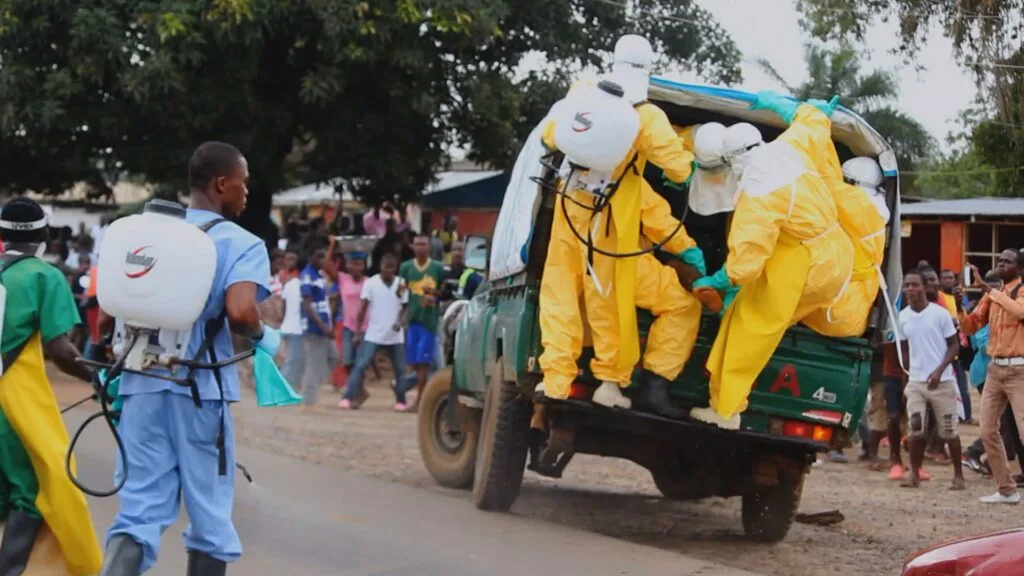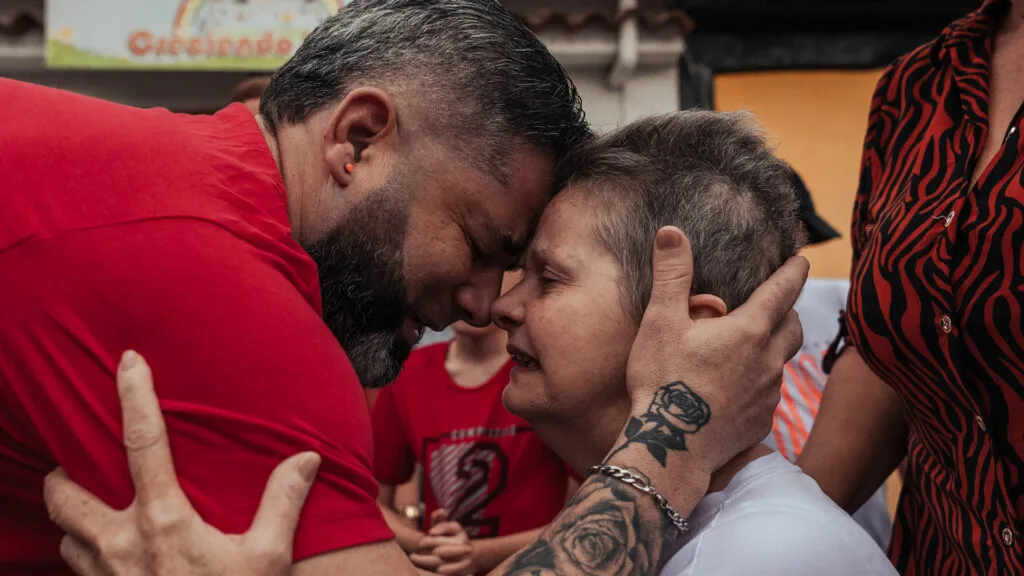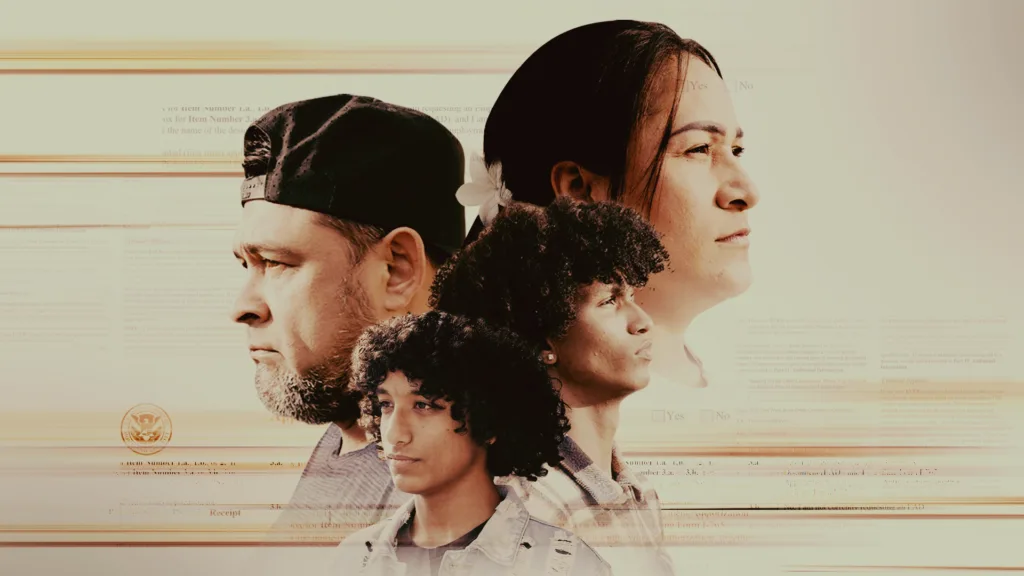Was Ebola Outbreak an Exception Or Was it a Precedent?
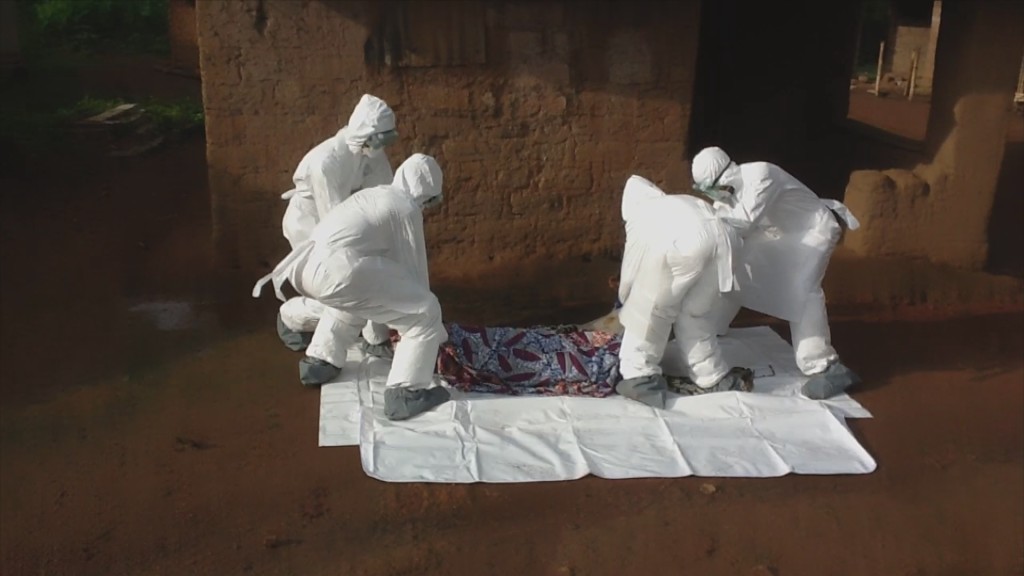
May 5, 2015
Share
By the time the World Health Organization (WHO) declared the Ebola outbreak “an international public health emergency” in August 2014, the crisis was in its ninth month. Nearly 2,000 people had contracted the virus, and more than 1,000 were dead. The standard playbook wasn’t working, and Bruce Aylward knew it.
“We were looking at one of the most dangerous pathogens that we knew, growing at an exponential rate,” Aylward says. “We needed clinical management, people to go in there and manage the Ebola cases. We needed public health expertise on the ground to be able to do the contact tracing. And I realized that capacity to manage something on this scale doesn’t exist.”
Before the outbreak, Aylward was an assistant director general at the WHO and its point person for polio eradication. But as criticism of the organization’s response to the Ebola outbreak began to build, Aylward took on the assignment of turning around an operation criticized by many outside experts as too slow and too ineffective.
His solution would come to be called the “70-70-60” plan. To get to zero cases, officials would aim to ensure that 70 percent of burials were conducted safely, and that 70 percent of those infected with Ebola were isolated in treatment, all within 60 days.
Today, nearly a year-and-a-half into the outbreak, West Africa has yet to hit the milestone of zero cases, but officials are increasingly encouraged by steady declines in the number of new cases and deaths. Groups like the WHO and Doctors Without Borders have helped, but the real credit, says Aylward, goes to the people of West Africa. “They did a lot of really brave things and they turned it around.”
In an interview with FRONTLINE filmmaker Dan Edge on March 18, 2015, Aylward discussed the path to the 70-70-60 plan, the criticism surrounding the WHO’s initial response, and why he says the Ebola outbreak “was not an exception,” but rather “a precedent” for future global health emergencies. Here are edited excerpts from that conversation.
On his early assessment of the outbreak in June 2014
Any time there’s an Ebola outbreak anywhere it’s bad. It’s by nature dangerous. You have an incredibly hazardous pathogen and it’s circulating somewhere — it’s something you always keep your eye on. So I started tracking it just a little bit, and I watched the numbers [go] up and then I watched them also come down again. Then there was a meeting of GOARN [Global Outbreak Alert and Response Network at the WHO]. … I had a look at the agenda and I realized there was going to be a specific session on Ebola, and because I wasn’t up to speed on what was happening — I knew cases were going down — I thought, well, I will go along to that. I did a little bit of work beforehand and I realized, oh this is not straightforward. In fact, cases had not continued to go down.
I went to the session and I looked at what was happening with the EPI curves [epidemiologic curves], what was happening with the geographic distribution, it was really clear that this was a serious problem. You had an EPI curve that was going [up], you had disease in three countries. An EPI curve that had been one color for multiple months was all of a sudden three colors because it was in three countries and the geography of the disease was clearly expanding as well. This was clearly a problem. And there was a lot of discussion in the meeting about what was working, what was not working and the response. MSF [Medicines San Frontiers/Doctors Without Borders] were there and multiple other partners, CDC [Centers for Disease Control and Prevention].
Reshaping the early response to the outbreak
There was a plan — it was sort of more the classic plan of OK, we’ve got the case finding in place and case managing and contact tracing, da da da, but clearly the virus was ahead of any contact-tracing capacity or case-finding capacity. The problem wasn’t finding the cases. The problem was isolation, burials and just cutting down that transmission, which was starting to escalate very, very quickly.
I talked to the team, and I realized that look, we were going to need to really restructure the whole approach here and the strategy really to try and take the heat out of this thing and slow it down so that then your classical approaches could work. And I remember actually drawing a couple of curves, one curve to show OK, here’s the outbreak going like this and then here is that incremental step up you get in Ebola treatment centers — It takes a long time to get them built, a long time to get them functional, you had to find another way to slow this thing down.
The first big decision was this is about burials and beds, with a bit of behavior change — the three Bs as we said. And the whole idea again was what was scalable super quickly? Burials, a bit of behavior change and isolation basically, rather than the full-on [Ebola treatment centers].
On whether the WHO should have changed its response sooner
Could something different have been done? I don’t know. It’s hindsight frankly. There was so much going on. When you look back in hindsight, [it’s] hard to believe that would have stopped what subsequently happened. And the reason I say that … is if we look at what happened subsequently, as UNMER [United Nations Mission for Ebola Emergency Response] rolled out and we had this fantastic international response with incredible energy brought to this, it still took an awful long time to slow this thing down.
New areas got infected and they saw that same pattern of growth even though we had the resources there, which meant that the underlying drivers of this thing, the behaviors, the customs, the lack of trust potentially between responders, communities, governments, etc., these problems were so fundamental that no matter what you brought, this was going to require a certain element of time. When you’re trying to build trust in a crisis, it’s a really tough, tough thing to do.
How the 70-70-60 plan was created
If you are going to slow something like this down very, very quickly, you are going to need a really simple, really clear goal that, at the same time, you believe from the science of this should slow it down. And we knew from some of the mathematical modeling that was done that if you could get to isolation rates and safe burial rates of 70 percent, you should be able to bend that curve.
That curve was going up like this. The goal was, could we bend that and how quickly? So what I sat down and looked at was well, with these kind of resources, and we’re right here, it’s going to be first of October when we start it up, what kind of timeframe could we get there by and what kind of timeframe did we have to get there by to prevent this from escalating to the levels that you were never going to be able to get to 70.
And so the goal was 70, 70 really and how fast to try and take the heat out of it. And, then as we looked at well, what existed, how quickly burial teams could be put up and trained, etc., etc., it became really clear to me this could be done in 60 days. … That was going to be a huge stretch target — that was very, very clear at the time — but this was an international crisis with huge security, stability, economic, humanitarian implications.
When it was something that simple, 70, 70, 60, everyone got it. That was the other big thing — you’re looking for simplicity and a goal and you can get everyone behind it. They don’t have to understand context; they don’t have to understand active surveillance versus passive surveillance; they didn’t need to understand any of that. What they needed to understand was 70 percent of people isolated in beds, 70 percent of the dead safely buried and this curve was going to bend and we had a shot at this but we had to do it fast.
The challenge of changing behaviors to slow the outbreak
When we look at what had to be done to slow down Ebola, you know, it’s hard to get really excited about safe and dignified burials. It’s tragic. You’re dealing with tragic consequences, and you’ve failed frankly by the time you’re burying people. And even when you’re looking at isolation and case management, you’re still dealing with consequences and not the actual transmission chains.
To do that you have to deal with the behaviors that are really the drivers, and that is the fascinating and tough part of Ebola and of disease control. And as you go to these countries — I went to these countries and I started understanding the behaviors that were driving this disease — a whole world opens up to you.
“Immediately you could see this was going to be a huge challenge because some of these behaviors are rooted in such deep belief and such important ideas as well.”These were the most fantastic cultures and the most fantastic societies, with deeply held rituals and beliefs and ways of life that were just fascinating and as foreign to us as our space suits and the rest were foreign to them. And immediately you could see this was going to be a huge challenge because some of these behaviors are rooted in such deep belief and such important ideas as well.
When someone dies, that person doesn’t die. That person goes into an afterlife where they are your advocate on your behalf, and they can reach back into your present and affect your life and your outcome in a good and a positive way. And I remember hearing and learning about this from some people in one of the areas. Somebody said to me — we were driving along in one of these Range Rovers somewhere and I was explaining to someone I was coming to understand some of these things and they said, “Yeah, people have these perceptions and these beliefs.” And I said: “No they’re not. This is their reality, that is how the world works.” Until we can see that and understand just how profound that is and what we’re trying to do differently, you have no sense of what a challenge this is going to be [to] stop and you could immediately see that.
The connection between burials and transmission
This is a fantastic virus. I mean, this virus was exploiting the very things that these people held most deeply at the points in their lives when they were most important to them. And once you start to understand that, you start to go wow, this is really a big challenge. It took a long time I think for many people to understand what you were doing with these societies, by changing those behaviors, you were changing those societies, not the behaviors. You were changing their futures and you were changing so much more then we could realize at the beginning, which meant you had to be very, very careful how you went about this. And it was going to take time. It was going to take a lot of trust. And remember, this is the first time someone was showing up to do something for these people. People aren’t used to people showing up to do something good for them.
The importance of Monrovia
We failed probably worst in Monrovia in this entire crisis because in Monrovia the body count went up and what happened was there started to be riots. There were state of emergencies. Children got shot. A 15 year old was killed. It shocked this society into changing its behaviors in a way that suddenly took the heat out of this thing, and it put in place extraordinary measures around how they dealt with their dead, with cremations and other things that were previously anathema in a population like this.
“This virus was exploiting the very things that these people held most deeply at the points in their lives when they were most important to them.”Suddenly the entire Monrovia knew Ebola was real — Ebola kills. Ebola’s going to kill me unless I do one or two things differently. There was a huge fear and people didn’t know what this was. They wouldn’t know a virus from a bacteria from whatever, but they knew we had to do something differently. And in those settings, people, whether they realized it or not, the first thing you do in that kind of overwhelming fear is you retreat, and they changed their behaviors in ways which suddenly slowed down and took the heat out of this thing because remember, this virus can only go to person to person — if you hug that person or you throw up on that person or whatever. And if all of a sudden there’s only one person taking care of a sick person, instead of a family for example, all of a sudden the disease slows right down, the intensity of transmission, and that’s what happened in Liberia. That’s what turned it around. Liberians turned their country around. We got in there a little bit afterward and took a lot of credit. They did a lot of really brave things and they turned it around.
The big lessons for the next outbreak
The really big lessons from this Ebola outbreak are, No. 1, biologic hazards or pan-epidemic problem diseases can have horrific humanitarian, security and even regional stability implications. No. 1, these things can escalate and become riddled with huge, huge consequences. Don’t underestimate these things.
No. 2, there are going to be more of these no matter what we think. Ebola was not an exception. Ebola is a precedent, and it’s reflecting the way the world is changing in ways that we don’t fully understand. There’s climate change happening, there’s deforestation happening, how we interface with animals is changing. … But as those things change, more and more new diseases are emerging from that animal/human interface or elsewhere. And so in the last decade or so we’ve seen pandemic flu. We’ve seen SARS [severe acute respiratory syndrome]. We’ve seen Ebola like this. We’ve seen MERS coronavirus [Middle East respiratory syndrome]. So we’re seeing multiple new things emerge. So the second big lesson, there will be more of these.
And the third big lesson, we are not prepared. There’s no question that the world is not prepared.
“Ebola was not an exception. Ebola is a precedent, and it’s reflecting the way the world is changing in ways that we don’t fully understand.”And interesting in this one is people look to those developing countries and say they didn’t have resilient health systems or they weren’t prepared. The West couldn’t manage this. The West stopped its airlines. The West stopped sending in responders because it knew if it got into their countries they weren’t sure they were prepared to deal with it. That’s what that said more than anything else. Part of it was fear, etc., but a part of it was we fear we cannot deal with this, we’re not prepared.
So what that tells us is there’s huge implications and consequences for these that go way beyond just the devastating human impact. Second thing is there’s going to be more of these, absolutely no question. We are not prepared, and it’s not simply a matter of tinkering with our existing mechanisms. That’s the fourth big message for me. UNMER was created as an ad-hoc solution to a really complex, health and humanitarian crisis, a health-itarian crisis. And as we go forward, we have to look at: Is it a matter of, you know, tinkering with what we have or is something new required? I think when you have a hazard that is driving a crisis like this where you’ve got to deal with the hazard itself as well as the consequences, you need a new construct to do that. OCHA [United Nations Office for the Coordination of Humanitarian Affairs] solves part of the problem, the new aid agency for emergencies. WHO solves part of the problem or should be able to from the health side, but this needs to be managed together, with real crisis management on a tremendous scale. Nothing exists to do that today.
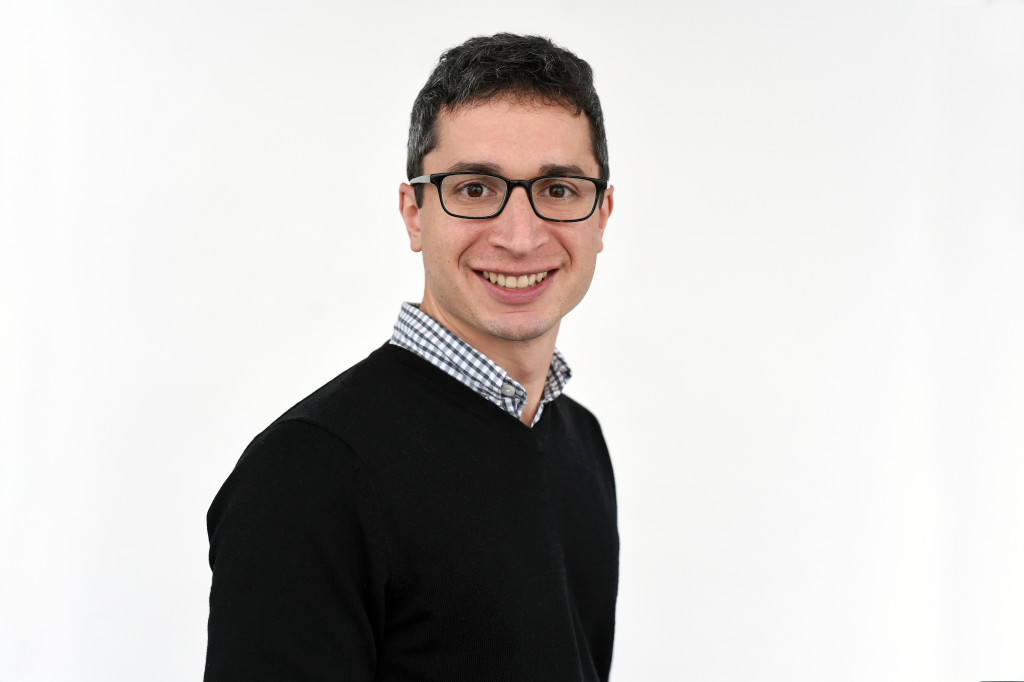
Related Documentaries
Latest Documentaries
Related Stories
Related Stories
Explore
Policies
Teacher Center
Funding for FRONTLINE is provided through the support of PBS viewers and by the Corporation for Public Broadcasting, with major support from Ford Foundation. Additional funding is provided the Abrams Foundation, Park Foundation, John D. and Catherine T. MacArthur Foundation, Heising-Simons Foundation, and the FRONTLINE Trust, with major support from Jon and Jo Ann Hagler on behalf of the Jon L. Hagler Foundation, and additional support from Koo and Patricia Yuen. FRONTLINE is a registered trademark of WGBH Educational Foundation. Web Site Copyright ©1995-2025 WGBH Educational Foundation. PBS is a 501(c)(3) not-for-profit organization.
